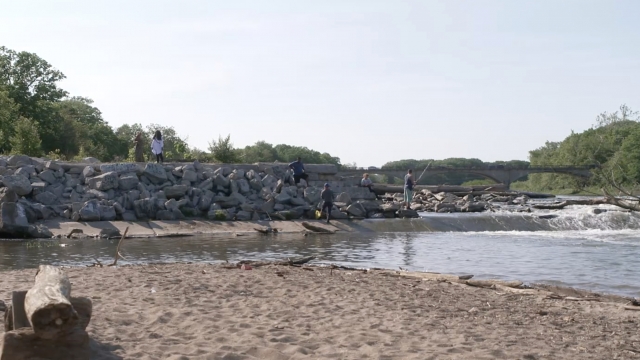The shores of Belmont Beach in Indianapolis tell of triumph and are a snapshot into the realities of history.
"This was the early 1930s and segregation was legal," explained Ebony Chappel, executive director of the Friends of Belmont Beach. "There were a group of Black business owners and community-minded people who wanted to have a place of our own."
But that history comes with highs and lows. The group intended to buy one piece of property but was offered Belmont Beach instead.
"The water was very polluted due to industrialization that was going on at the time," said Chappel.
It's a familiar story. In the 1930s, Black people forbidden from using public swimming pools were systemically pushed to open water lakes or sinkholes where water safety didn't really exist, and drownings were frequent.
Like a pebble tossed into a lake, experts say there was a ripple effect. Today, 64% of African American children don't know how to swim, compared to 40% of White children.
SEE MORE: Monday marks 3rd year Juneteenth celebrated as national holiday
"If your parents don't swim or the grownup at home doesn't swim, or the caretaker at home doesn't swim, then chances are you're not going to swim," explained Dr. Tiffany Monique Quash, a swim coach and research methodologist at American University.
Quash says attempts to desegregate swimming often turned violent, like the 1964 wade-in in St. Augustine, Florida.
"The motor lodge's manager poured muriatic acid upon people participating in a wade-in. Now the thing is that people often think that that 1964 incident is a solitary incident, but we start to see Black bodies are still being policed in pools," said Quash.
Today, those barriers still exist, from a lack of access to public pools to the banning of swim caps that can fit curly hair.
There are also fears and myths passed down through generations, like the notion that Black people have a different body density or an inability to float — myths a generation of swimmers and teachers like Quash are dispelling one by one.
According to a study from the USA Swimming Foundation, 76% of parents reported that their children would be more likely to want to participate in swimming if they saw a talented swimmer who looked like them.
SEE MORE: Government offices, other places closed Monday for Juneteenth
"By being present on the deck and noting the importance that representation matters as a Black woman — it's important for other kids, particularly other Black kids, but most importantly other kids see me on the deck," said Quash.
Like the sands of time, always changing, at Belmont Beach a new group of entrepreneurs are working to bring new life to these shores while honoring the legacy of those who walked before them.
"This is a space for Black joy first, and we don't get to celebrate us enough," said Teddrick Hardy, president of Friends of Belmont Beach.
Today the group has cleaned up the shores that went to waste after years of neglect and dumping, hosting free events and a community garden.
While the waters aren't ready for swimming just yet, they're using the history to bring attention to the need for swimming lessons and opportunities for all communities by working with area programs.
Trending stories at Scrippsnews.com



